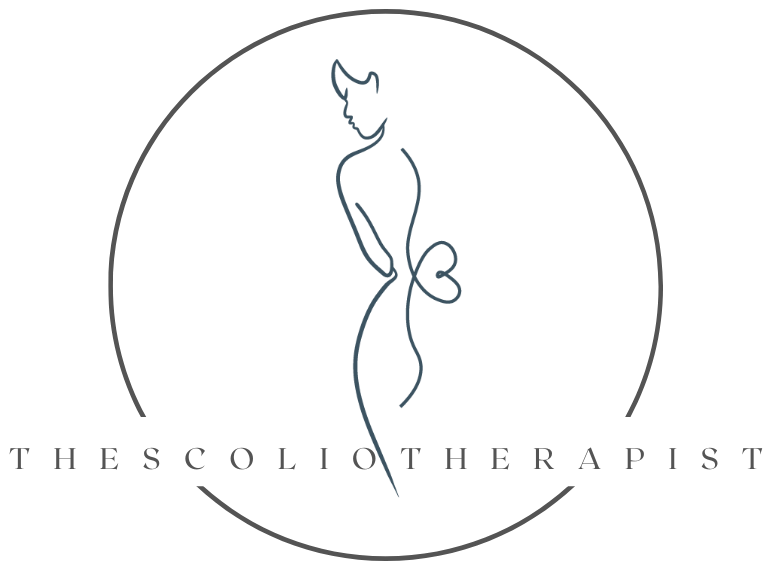Recent Research About Scoliosis: What You Need to Know
I often get questions from my clients about recent scoliosis research and studies. They want to know where they can find scientific information about their condition and treatment methods so they can learn more. But often, even when they’re able to find those published articles, the text is so complex that it’s hard to figure out what they’re saying or so long that it’s boring to read.
I understand those challenges, which is why I wanted to spend a little time covering some of the most recent scoliosis research. I’ve found three recent studies that have some interesting things to say about scoliosis and treatment methods. I’m giving you an overview of each one below, with clear details about the study, participants, and results
Research Study Result #1: Pilates and Schroth Exercises Are Beneficial
The first resource to cover has a very long name: Outcome of 24 Weeks of Combined Schroth and Pilates Exercises on Cobb Angle, Angle of Trunk Rotation, Chest Expansion, Flexibility and Quality of Life in Adolescents with Idiopathic Scoliosis. But what this study essentially shows is that Pilates and Schroth exercises can be very effective.
The adolescent (ages 10 to 17) participants in the study had Cobb angles between 10 degrees and 45 degrees (i.e., mild to moderate spinal curves). They spent 24 weeks doing a combination of Pilates and Schroth exercises in daily sessions about 60 minutes long.
The participants’ spines were assessed at the beginning of the study, at 12 weeks, and at the end of the 24-week period. And the results were excellent!
There were significant improvements to Cobb angle, chest expansion, trunk flexibility, and quality of life. In other words, the combination of Schroth and Pilates exercises was beneficial for adolescents with mild to moderate idiopathic scoliosis.
Research Study Result #2: Basic Body Awareness Therapy Can Help Reduce Spinal Curves
Let’s look at another study that featured adolescents with scoliosis: Effectiveness of basic body awareness therapy in adolescents with idiopathic scoliosis: A randomized controlled study. Basic body awareness therapy (BBAT) centers on becoming more aware of where you are in relation to the space around you. The point of this study was to see how BBAT impacted adolescents with scoliosis.
In this study, the 20 participants were separated into two groups, and all of them were instructed to wear a scoliosis brace for 23 hours per day throughout the study. One group participated in BBAT and traditional scoliosis exercises whereas the other group only did the traditional exercises.
The participants were assessed to evaluate several aspects: Cobb angle, angle of trunk rotation, trunk asymmetry, and quality of life. These assessments happened at the beginning of the study and after 10 weeks.
The results showed that while both groups experienced improvements in their Cobb angles, the BBAT group saw more significant changes. Although both groups experienced benefits relating to how they viewed their physical bodies, only the BBAT showed improvements in body asymmetry. Essentially, this study shows that adding BBAT protocols to traditional scoliosis exercises had a positive effect.
Research Study #3: Vestibular Abnormalities May Contribute to Scoliosis
This next study (Impact of the Vestibular System on the Formation and Progression of Idiopathic Scoliosis: A Review of Literature) is extremely interesting because it looks at the overlap between scoliosis and the vestibular system, which is something I’ve been interested in for quite a while. (You can hear more about this connection in Episode 35 of the Ahead of the Curve podcast.)
As the title indicates, this study is a comprehensive review of literature relating to scoliosis and the vestibular system. Specifically, researchers were interested in learning the vestibular system’s role in initiating and progressing scoliosis. They looked at the link between vestibular abnormalities (which can affect balance, among other things) and scoliosis.
Researchers studied 15 different literature publications and found that there wasn’t complete harmony between them. Some published studies showed a link between the vestibular system and the formation/progression of scoliosis. But others didn’t find any connection between them. Ultimately, researchers concluded that it’s unlikely that vestibular disorders are the sole trigger for scoliosis, but they may play a role in its formation and progression.
Applying Scoliosis Research to Your Own Life
There’s value in keeping up on the science and research of scoliosis. But it’s also important to have a set of practical tools you can use to understand and address your own scoliosis symptoms. If you’d like expert resources and approachable, effective treatment options you can apply to your own life, join the Scoliosis Strength Collective.
As a Scoliosis Strength Collective member, you’ll get access to live weekly workouts, 1:1 coaching sessions, educational resources, and scoliosis exercises for your specific curve type. Plus, you’ll be part of an encouraging, supportive group of other scolio-warriors! Get all the details and join today.
If you want to stay up-to-date on scoliosis topics, listen to my podcast, Ahead of the Curve. Subscribe to get every episode when it airs!
Resources Mentioned
Ahead of the Curve, Episode 35: Scoliosis and the Lymphatic System, How They’re Connected
Lateral semi-circular canal asymmetry in females with idiopathic scoliosis
